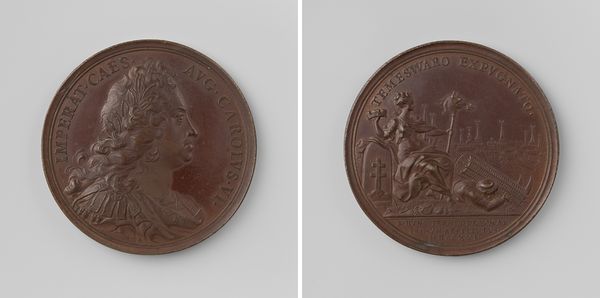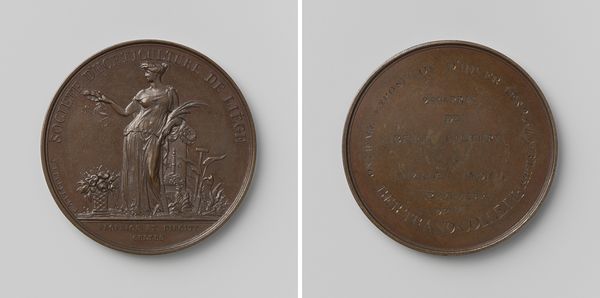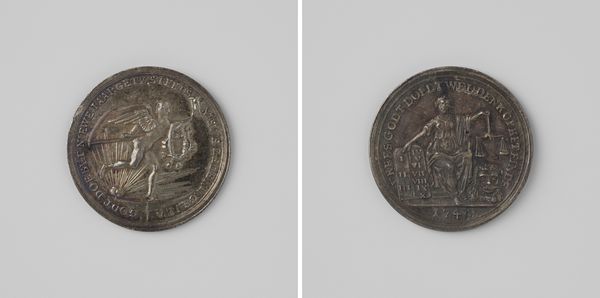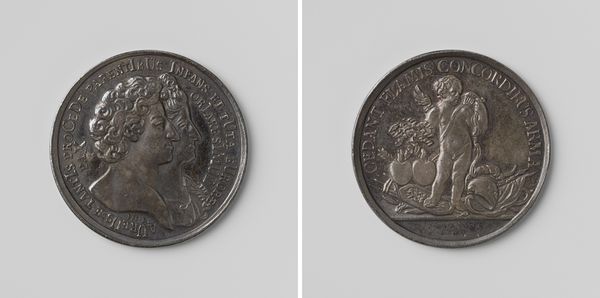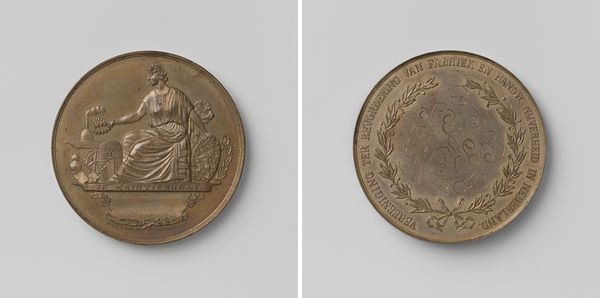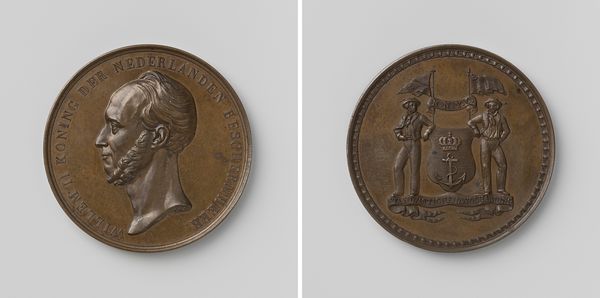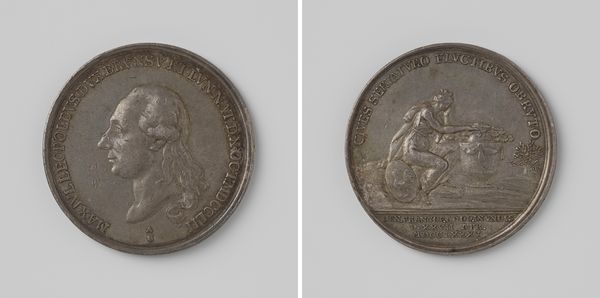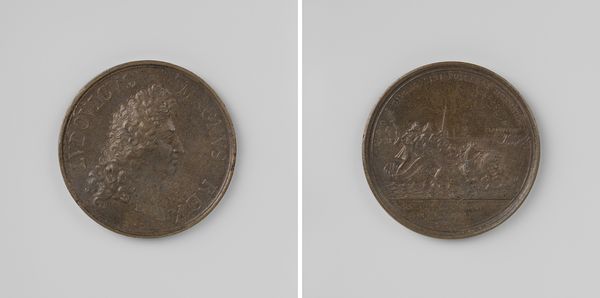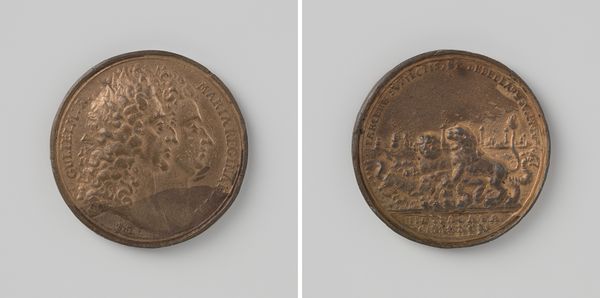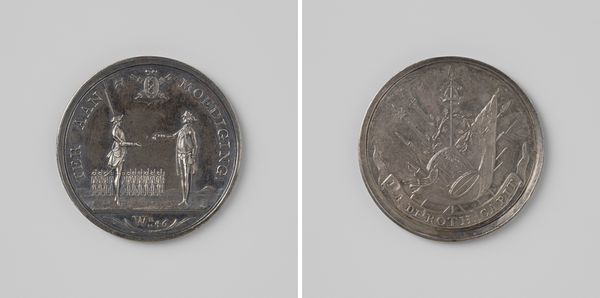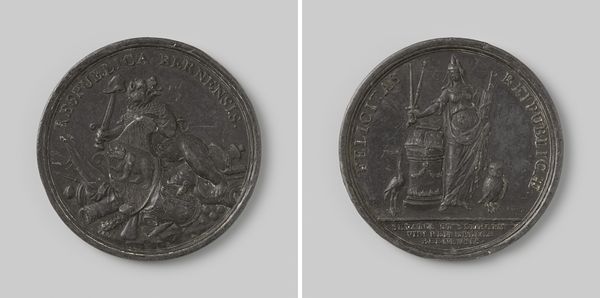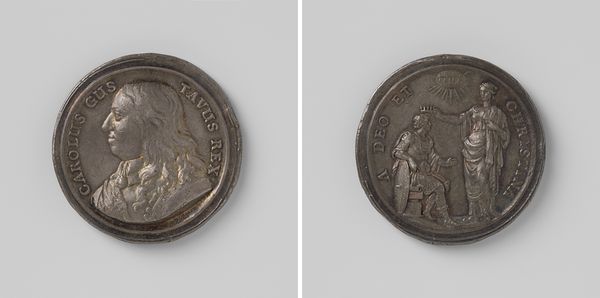
Oeconomische Tak van de Hollandsche Maatschappij der Wetenschappen 1782
0:00
0:00
metal, relief, sculpture, engraving
#
portrait
#
medal
#
neoclacissism
#
allegory
#
metal
#
sculpture
#
relief
#
sculpture
#
history-painting
#
engraving
#
miniature
#
statue
Dimensions: diameter 4.9 cm, weight 43.62 gr
Copyright: Rijks Museum: Open Domain
Curator: This medal, “Oeconomische Tak van de Hollandsche Maatschappij der Wetenschappen,” crafted in 1782 by Johan George Holtzhey, immediately strikes me as cold and austere. The material, likely bronze or copper, combined with the shallow relief, gives it a stoic feel. Editor: Indeed. The cool, metallic surface contrasts so sharply with the warmth of allegorical imagery depicted. Medals like these served a powerful public function in the 18th century, circulating specific narratives within learned societies. This particular medal was a symbolic marker of the Dutch Society of Sciences. Curator: Absolutely. Thinking about the physical act of its production interests me greatly. Each strike of the die, each identical impression created. The repetitive labor central to crafting potentially thousands of these things. This speaks to me of early industrial ambition and the societal structures upholding these new, standardized forms of labor and consumption. Editor: Precisely. Its historical significance lies in visualizing the Enlightenment ideals championed by the Society. Observe the two figures. On one side, a man with militaristic clothes places a laurel wreath on the head of the female figure. Together, they seem to embody Honor and Prosperity, ideals very common to Neoclassical artworks. Curator: The honeycomb stands as an efficient visual shortcut to promote these ideas, illustrating prosperity. A single industrious colony promising abundance for all! These objects highlight the role that materiality played in disseminating enlightenment thought; these objects, born of very specific workshops, spread well beyond them. Editor: The act of rewarding members who contributed to the economic growth of the Netherlands certainly cemented the Society's status. In distributing such works, there was more at play than the medal's material components, they also worked to uphold and reflect contemporary politics. The medal thus becomes an artifact embedded within a larger system of patronage and prestige. Curator: Looking at the surface quality reveals tooling marks which indicates the artist didn's attempt to fully hide the handmade nature. I now view its production as the nexus of human skill and emerging mass production that the Dutch society was exploring at that moment. Editor: Considering that history, looking at its present location in the Rijksmuseum, one can interpret that it is presented here to elevate craft and learned society ideals through display in this context, reminding the visitors of Dutch enlightenment’s complex and far reaching legacy.
Comments
No comments
Be the first to comment and join the conversation on the ultimate creative platform.
